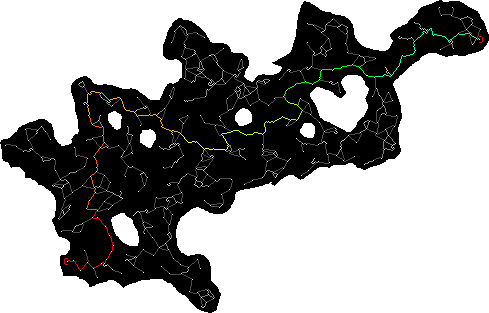With sixteen stars outside of the Ecumene, the Hydric Main's five hundred twenty-six star span stretches through parts of sectors 001, 004, 010, 011, 012, 013, and 244. Eleven stars are contained within the Hydric Main but connected to it only by traces, three of which are part of an entire cocooned main. There are several points in the Hydric Main where if the stars were marginally further apart the Hydric Main would be fractured yet still massive- compare the three mains previously thought to be the Hydric Main's equal- the Nottal Hydric Main (94 stars), the Serpentine Main (55 stars), and the Hypernottal Main (75 stars). The two largest clusters within the Hydric Main are in sectors 011 and 012- these respectively contain 13 and 22 stars. The largest overdensity in the Hydric Main is in sector 244, and contains 6 stars- the same as that of the Ecumenical Cluster. Who knows how large the Ecumene would be if it arose there?
The Hydric Transfer Service is largely considered to be one of the most forward-thinking initiatives of the early third millenium. In those days, the Ecumene was rapidly expanding along the Hydric Main, but leap transit was still too costly for most use. As such, the Hydric Transfer Service planned to take advantage of the Hydric Main's vast length... and establish a trade corridor stretching throughout the whole thing. Unfortunately, the Hydric Transfer Service planned its most ambitious mission first- a long-duration commercial run all the way from Nearport (a leap, a jump, and another leap from Chadalayan) to the important alien trading post of Adajut's Star.
The 67.1-month (5.6 years one way, including port and supply time) long journey snaked through the Hydric Main, traversing 93 of its 526 stars and travelling 402.3 light-years on the quickest, most direct route... and came back mostly empty. The ridiculous distance and time required meant that trade from the Ecumene to foreign polities simply could not be done at the moment. Apart from a few ill-fated trips for extremely rich people (one of the most important archaeological sources of the proof of such a journey), the Hydric Transfer Service never saw true service. Within a few centuries, faster drives would become available- but that would only occur after the Ecumene sundered.
